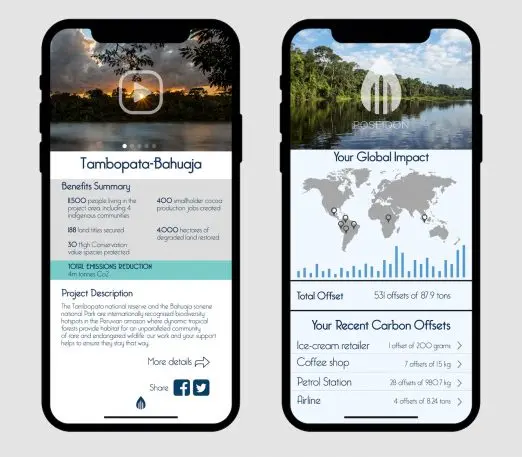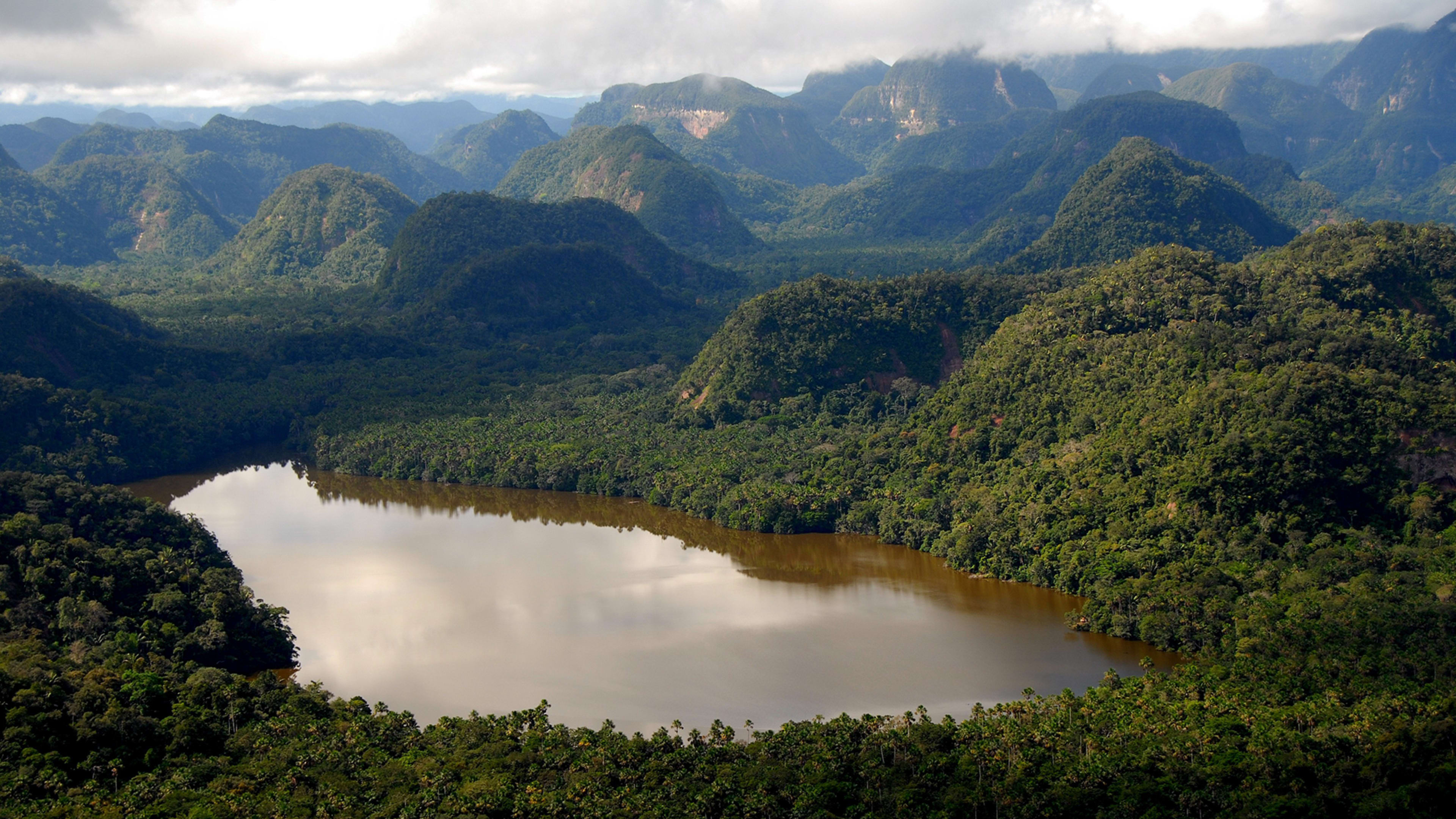If you buy ice cream from a Ben & Jerry’s store in London’s Soho neighborhood, the company will spend a penny to offset the carbon footprint of each scoop, and the cashier will ask if you’d like to donate an additional penny to make even more of an impact. In a new pilot, the cafe is the first retail store in the world to start using a tech platform that makes it possible to immediately and cheaply offset the climate impact of daily purchases.
The emissions from a scoop of ice cream–including everything from the cows to transportation and freezing the product–add up to roughly a quarter of a pound of carbon dioxide. At the store, the new tech platform automatically recognizes the footprint for each customer. At a cost of less than a penny, it’s possible to support reducing the same amount of emissions through a forest conservation project in Peru. (Ben & Jerry’s is donating a full penny to ensure that the emissions are more than covered, and if consumers donate a penny or more themselves, they can actively fight climate change by supporting an area of forest beyond what’s needed to offset their own purchase.)

It isn’t easy for individuals to buy offsets now; while it’s possible to offset a flight, or go to a website that lets you roughly estimate the carbon footprint of your entire life and offset that, it hasn’t been possible to link specific items in retail stores to instant offsets or to buy small amounts of offsets, as the credits are usually sold in metric tons of carbon. Blockchain has changed that.
Initially, Poseidon started using blockchain technology, which creates a digital public ledger that can’t be changed, to address some of the challenges of the voluntary carbon market. When businesses and other large organizations buy offsets now, it can sometimes be difficult to prove that a particular offset actually succeeded in reducing carbon emissions. A credit might be mistakenly sold more than once and double counted, or hard to track.
“It’s currently very difficult for traders and for participants in the carbon market to fully understand the impact that carbon credits are having and how valid carbon credits are,” says Laszlo Giricz, founder and CEO of Poseidon. Blockchain makes the process transparent. But it also makes it possible to easily add carbon offsets to purchases at retail stores.
The nonprofit hadn’t initially considered working in retail. But using blockchain cuts the cost of each transaction to a fraction of a cent, and makes it fast enough that it can be completed quickly at a cash register. (It’s worth noting that though blockchain can be a significant source of emissions itself, Poseidon is working with another nonprofit, called Stellar, with a platform that significantly reduces impact. Each transaction will have roughly the carbon footprint of using a credit card.)
Blockchain also makes it possible to split up the large chunks of carbon offsets into smaller amounts, equivalent to the emissions of individual products. A pair of shoes, for example, might have a carbon footprint of 20 kilograms and cost 20 cents to offset.
Fighting deforestation–which happens globally at a rate of roughly 27 soccer fields per minute–is a critical part of fighting climate change, since trees suck up carbon dioxide as they grow. Forests also release the greenhouse gas if trees are burned to make way for palm oil plantations or cow pastures. Governments have invested heavily in projects to keep forests standing. Some businesses, too, support forest conservation projects. Poseidon will work with both governments and businesses that want to buy offsets. But it also recognized that the new ability to work with consumers could help forest conservation projects scale much more quickly.
“We realized that we can actually move this market to the retail space and open it up, and that’s when it became really exciting,” Giricz says. “We were now able to create demand, and in the carbon markets, that is really the big issue. The big issue in carbon markets is not supply. The big issue is demand for carbon credits.”
When customers buy ice cream at the London shop, the offsets go to help grow a project based in Cordillera Azul National Park in Peru, at the intersection of the Amazon Basin and the Andes, where a B Corp called Ecosphere+ works with local communities to support businesses that provide fair wages without cutting down trees in an area at high risk of deforestation. Cocoa, for example, is grown in a zone around the park, and later turned into fair-trade chocolate bars. Independent auditors verify that the projects actually protect trees–often hundreds of years old–that otherwise would have been lost to industry. Satellite and drone images will monitor the forest over time to track that the trees are still protected. As more funding goes to the project, the area protected will grow.
Buying offsets is a good thing, but it cannot solve the problem of climate change. “This is a stepping stone,” says Giricz. “We all want to get to the utopian future where there are no emissions–every car is an electric car and all the factories run on solar power. We want to get there, but we know we’re not going to get there overnight. What we can do right now, as we’re moving to a more environmentally friendly lifestyle, we can protect the forests because they really need our help.”
Ben & Jerry’s is working to reduce the carbon footprint of its products in multiple ways, from a self-imposed carbon tax, to a machine that turns ice cream waste into energy, to agroforestry projects that help vanilla farmers plant trees. But offsets can help account for the rest. The company is now considering using the new platform in all of its stores.
Poseidon hopes to work with retailers everywhere. At first, it will use a catalog of average emissions for different products, though some retailers, like Ben & Jerry’s, have already calculated the impact of specific products, and, ultimately, other companies could do the same. As it expands, Poseidon wants to create a new habit for consumers. Instead of giving a donation to an environmental nonprofit at the end of the year or after a major event, people can begin to give tiny amounts that directly relate to their own consumption. In the pilot, the company has found that some consumers want to round up their payment to the nearest pound, giving significantly more.
“If you have micro-donations with every single purchase you’re making, two things happen,” Giricz says. “First, none of these additional donations hurts your pocket because they’re all a few pennies. But because it’s scaled, the sum of all these micro-donations is huge.”
Recognize your company's culture of innovation by applying to this year's Best Workplaces for Innovators Awards before the extended deadline, April 12.
